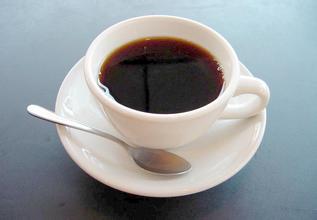Introduction to the varieties of boutique coffee beans Indonesia & #160; Manning
Colombia # 616:
From Finca Veracruz Manor, Antioquio region, Colombia, 1650m above sea level, washed after cold fermentation and dried in silo
24-hour treatment, Caturra species.
Flavor description: White grape, litchi, mixed ripe fruit, full-bodied.
Veracruz is a small fine estate in Santa Barbara that produces the finest coffee beans and is the place where low-temperature fermentation and washing treatment was founded. This method not only ensures cleanliness, but also improves the fruit flavor of coffee. The number of this batch is 616.
Rwanda Musasa:
Produced from Ruli,Musasa Cooperative, Rwanda, 1700-2000m above sea level, washing treatment, 100%Red Bourbon.
Flavor description: Jasmine, citrus, apricot, clean and bright, full of sweetness, rich taste, blackcurrant finish.
Musasa Cooperative is a very well-known coffee cooperative in Rwanda with three washing plants. Won the second and seventh places of Rwanda COE in 2010. The coffee is selected from the Ruli processing plant, and the coffee fruits are picked by hand and screened strictly by hand, and then carefully processed and graded. And carried out many strict cup tests before export to ensure accurate quality control and traceability of each batch of coffee beans. The exquisite treatment gives this coffee excellent cleanliness and fullness of flavor.
Sumatra Mantenin:
Produced from Takengon Manor, Sumatra, 850-1500m above sea level, semi-washed, Rasuna variety.
Flavor description: dried figs, sweet-scented osmanthus, spices, low acid, full-bodied and mellow.
The coffee comes from small producers around the town of Takengon on Lake Laute Tawal in the remote northwest of Sumatra. They are all traditional family farms and grow only a small amount of traditional coffee. Other crops are usually planted next to coffee to support the family. Like the coffee produced by most small farmers in Sumatra, the coffee is semi-washed. Growers use a basic peeling machine to peel the cherries on the farm. After that, they dry the evenly sticky layer and transport it to the mill in a semi-wet state to be shelled. This process is thought to give raw Sumatran beans a special turquoise appearance.

Important Notice :
前街咖啡 FrontStreet Coffee has moved to new addredd:
FrontStreet Coffee Address: 315,Donghua East Road,GuangZhou
Tel:020 38364473
- Prev

The origin of individual coffee introduces what cups are used for lattes and cappuccinos
African Democratic Republic of the Congo: Kivu, Ituri Rwanda: Kivu Kenya: AA, Kenya AA Oreti Estate, Uganda: Elgon, Bugisu, Ruwensori Zambia: Kasama, Nakond
- Next

Introduction to the varieties of African coffee beans
Zambia is lighter than Kenyan coffee and is suitable for drinking in the afternoon. Coffee was introduced to Zambia (Zambin) from Kenya and Tanzania in the early 20th century, and now it also produces giant coffee beans and bean-shaped berry coffee beans. High-quality Zambian coffee is getting better and better. Although the taste is slightly light, the flavor is similar to that of Kenyan coffee, and the price is exactly the same. Zambian coffee owner
Related
- Does Rose Summer choose Blue, Green or Red? Detailed explanation of Rose Summer Coffee plots and Classification in Panamanian Jade Manor
- What is the difference between the origin, producing area, processing plant, cooperative and manor of coffee beans?
- How fine does the espresso powder fit? how to grind the espresso?
- Sca coffee roasting degree color card coffee roasting degree 8 roasting color values what do you mean?
- The practice of lattes: how to make lattes at home
- Introduction to Indonesian Fine Coffee beans-- Java Coffee producing area of Indonesian Arabica Coffee
- How much will the flavor of light and medium roasted rose summer be expressed? What baking level is rose summer suitable for?
- Introduction to the characteristics of washing, sun-drying or wet-planing coffee commonly used in Mantenin, Indonesia
- Price characteristics of Arabica Coffee Bean Starbucks introduction to Manning Coffee Bean Taste producing area Variety Manor
- What is the authentic Yega flavor? What are the flavor characteristics of the really excellent Yejasuffi coffee beans?

